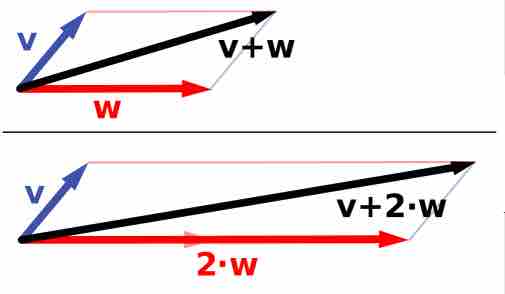As learned in a previous atom, relative velocity is the velocity of an object as observed from a certain frame of reference.
demonstrates the concept of relative velocity. The girl is riding in a sled at 1.0 m/s, relative to an observer. When she throws the snowball forward at a speed of 1.5 m/s, relative to the sled, the velocity of the snowball to the observer is the sum of the velocity of the sled and the velocity of the snowball relative to the sled:
If the girl were to throw the snowball behind her at the same speed, the velocity of the ball relative to the observer would be:
The concept of relative velocity can also be demonstrated using the example of a boat in a river with a current. The boat is only trying to move forward, but since the river is in motion, it carries the boat sideways while it moves forward. The person on the boat is only observing the forward motion, while an observer on the shore will notice that the boat is moving sideways. In order to calculate the velocity that the object is moving relative to earth, it is helpful to remember that velocity is a vector. In order to analytically add these vectors, you need to remember the relationship between the magnitude and direction of the vector and its components on the x and y axis of the coordinate system:
- Magnitude:
$v = \sqrt{{v_x}^2+{v_y}^2}$ - Direction:
$\theta = \tan^{-1}{(\frac{v_y}{v_x})}$ - x-component:
$v_x = v \cos \theta$ - y-component:
$v_y = v \sin \theta$

Vector Addition
Addition of velocities is simply the addition of vectors.
These components are shown above. The first two equations are for when the magnitude and direction are known, but you are looking for the components. The last two equations are for when the components are known, and you are looking for the magnitude and direction. The magnitude of the observed velocity from the shore is the square root sum of the squared velocity of the boat and the squared velocity of the river.